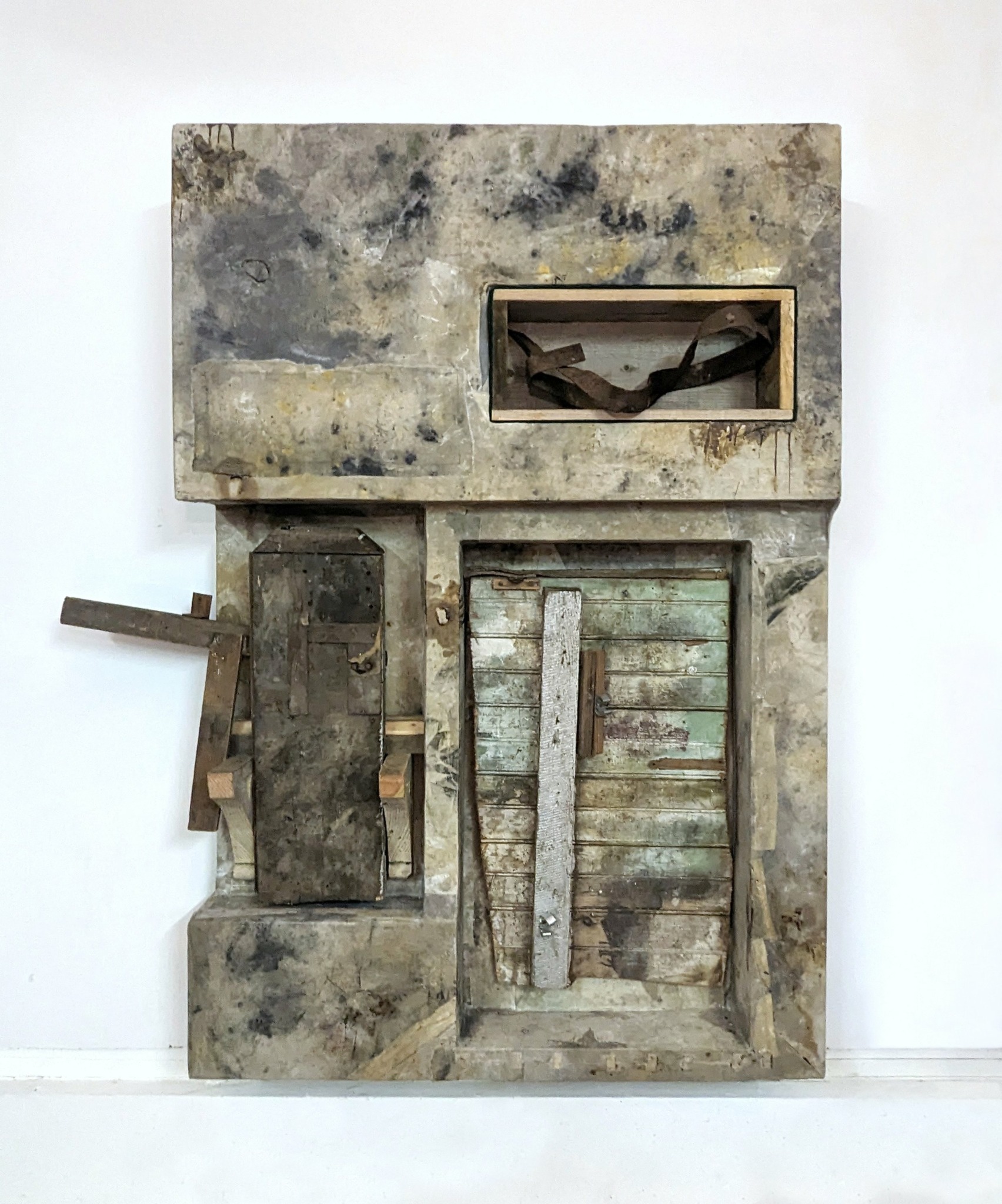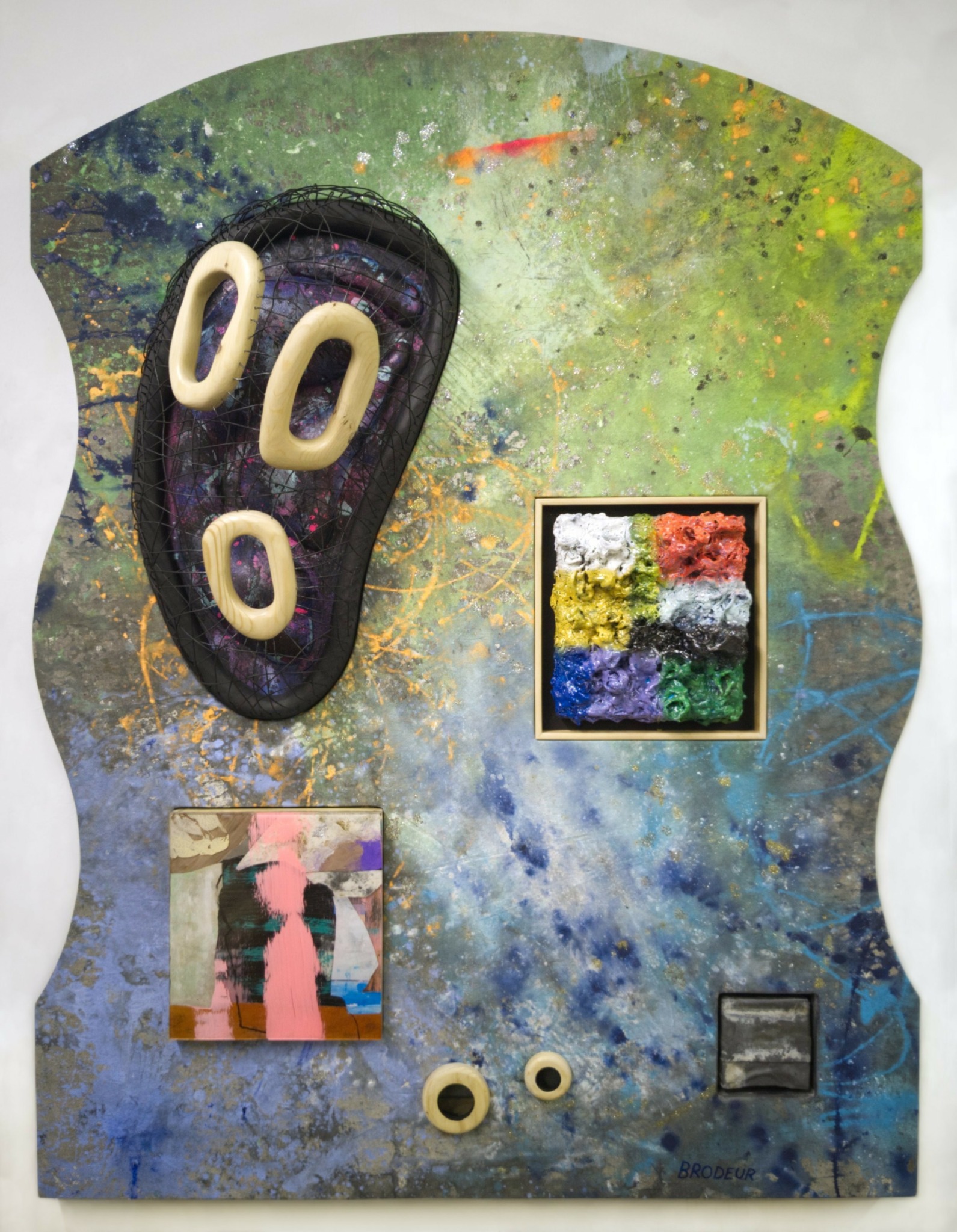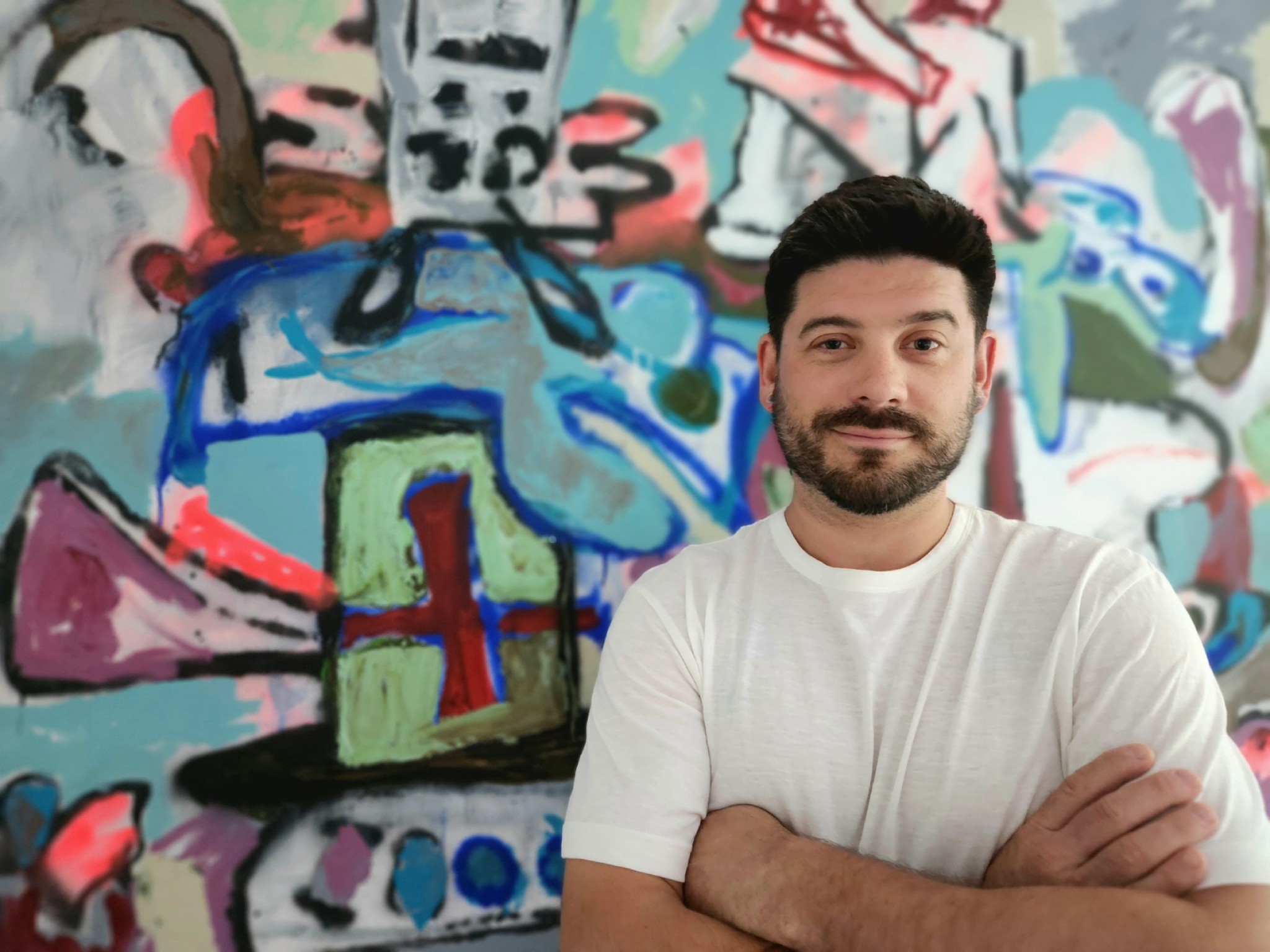Alright – so today we’ve got the honor of introducing you to Aaron Brodeur. We think you’ll enjoy our conversation, we’ve shared it below.
Alright, Aaron thanks for taking the time to share your stories and insights with us today. Can you talk to us about how you learned to do what you do?
I learned a broad overview of art-making during my years in college which gave me strong foundations in sculpture, installation, painting and drawing. After college I worked in a props department for the trade show industry where I developed practical skill sets and tricks of the trade that I could further apply in my art practice. For several years I did freelance logo design, illustration and t-shirt graphics for surf/skate companies on the side. In addition to traditional approaches, experimentation with material and processes has been a big part of what I do, and working in that manner forces me to continue learning and advancing my abilities.
It’s my natural tendency to be a multi-disciplinary artist. I have too many interests and a high level of curiosity that prevents me from focusing all of my efforts into one medium. I’ve been criticized for being this way. During a portfolio review with art department faculty, my presentation was interrupted by my painting professor who abruptly stated, “You’re a Jack, don’t be a Jack.” The content or quality of my work was irrelevant. All that he saw was a pile of disparate pieces in many mediums that lacked cohesion. I didn’t know what he meant by me being a Jack. So after asking him, he said, “You’re a Jack of all trades, and by being a Jack you’re a master of nothing.” That happened almost 20 years ago, and I still think about what he said at least weekly. He might be right. I might be the detriment to my own success. Yet, I haven’t been able to change that quality about me. I’m still undecided whether that’s a good or a bad thing.
But ultimately failure is what has and continues to teach me the most. Every time I fail, which is too often, I have to learn how to fix the problem I created. Most importantly, it’s so critical to continue making work. Never stop making, never stop pushing yourself, and when you feel like you’re going to break down work even harder. Perseverance is a key factor in learning; it’s a great instructor.
I’m not sure what I could have done to speed up my learning process, but I did take an action that slowed me down. Two days before classes began, I withdrew from the MFA program I was enrolled in at the School of the Museum of Fine Arts in Boston. I’ll never know what I would’ve learned or what opportunities or outcomes would have resulted if I had received a master’s degree. Life takes its course, and sometimes the only thing I can do about it is to hang on tight and go for the ride.
Work-life balance has also been tricky. When my first son was born I left my job to be a stay-at-home dad. Two and a half years later, my wife and I had another son. Until my younger son went to pre-k, it was near impossible for me to have a studio practice during the day. Most of my work was done at night or on weekends, but that available time was extremely limited so I sacrificed sleep to make my art. Now that both of my sons are in grade school, I’m able to be in the studio during school hours, but their activities have expanded into nights and weekends which has reversed my accessibility to working hours. So, I still don’t sleep, especially when a deadline is tightly approaching.
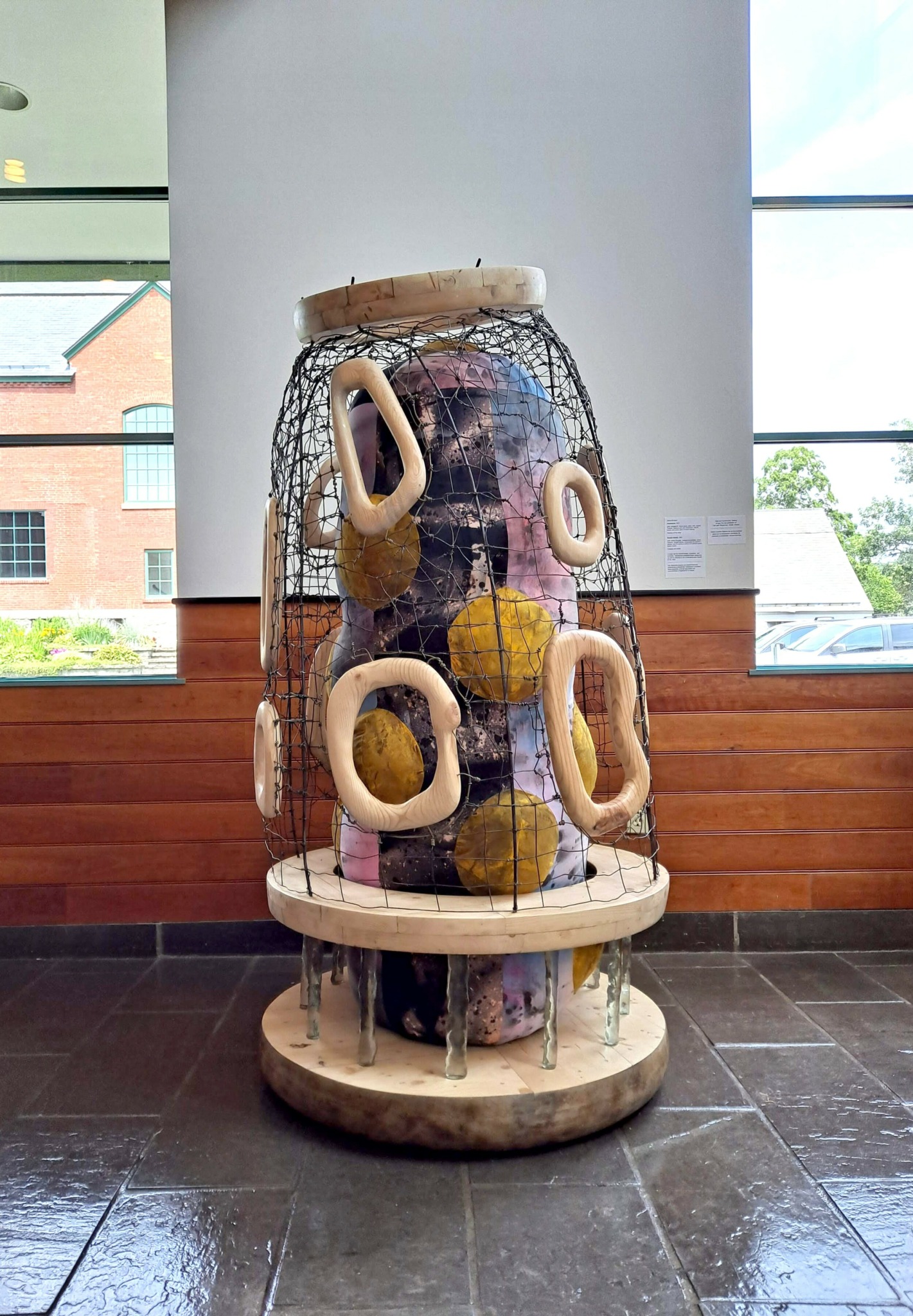
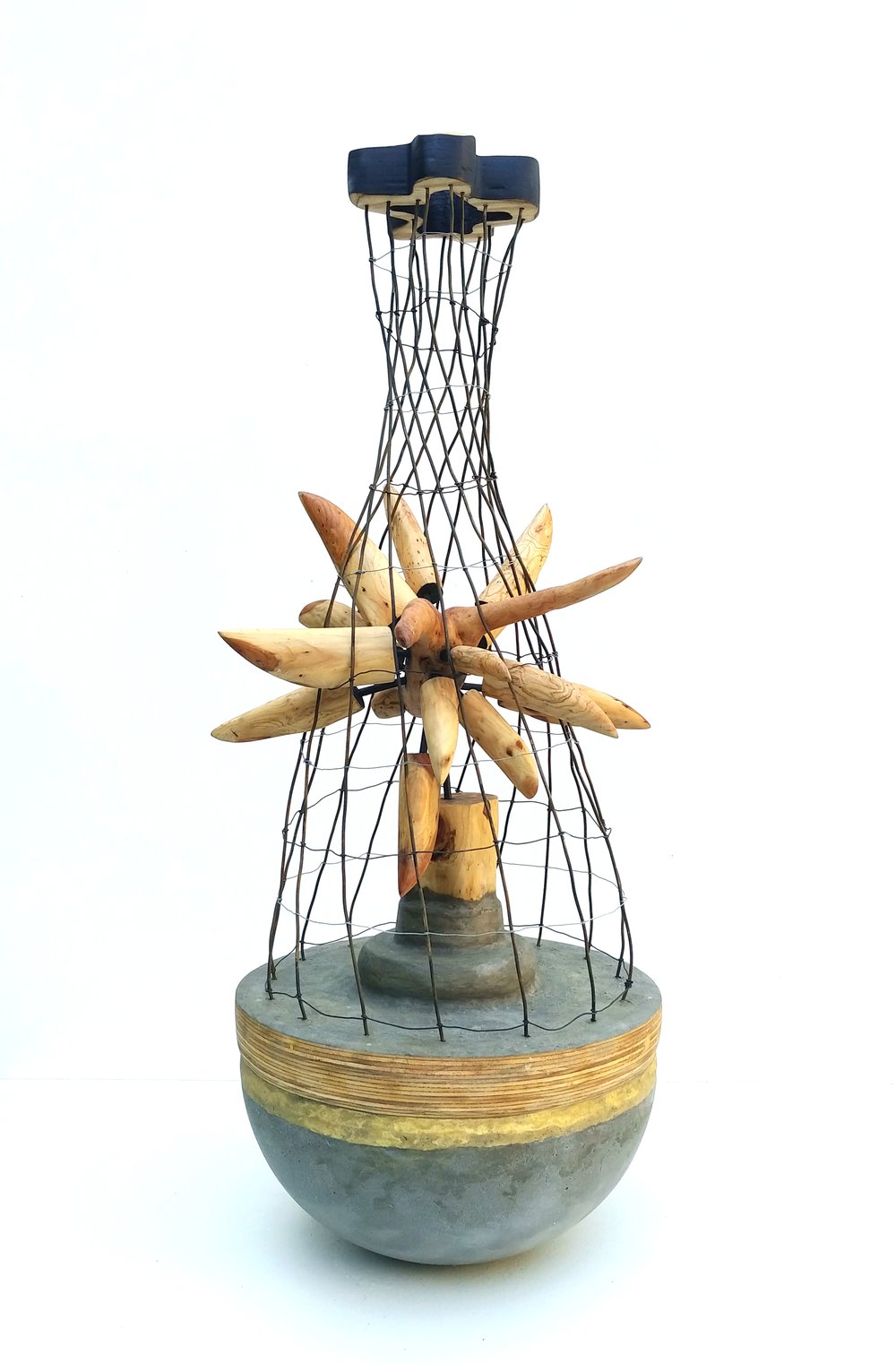
Great, appreciate you sharing that with us. Before we ask you to share more of your insights, can you take a moment to introduce yourself and how you got to where you are today to our readers.
I’ve always been playful, adventurous and a risk-taker. Where I lived growing up in Rhode Island, my home abutted hundreds of acres of a mature, coastal oak-holly forest. When I was home after school, on summer break or on weekends, I would venture deep in the woods for hours on end, either alone or with my brother. My parents didn’t know where I was or that I even went into the woods. As a young kid, having that freedom to explore and discover became lifelong characteristics of mine. Those personality traits have always translated somehow into my artwork.
Junior year in high school is when I realized that I wanted to pursue being an artist. My senior year I took AP art, and that was my first experience with putting together a complete body of work. I made a series of self portraits using a different medium or technique for each one. The art I was inspired by during that time were Wayne Thiebaud’s colorful still life paintings, Red Grooms’ multimedia constructions, Philip Guston’s cartoonish figures, everything Picasso, pop art and graffiti. My teacher was incredible, not just as an instructor, but as an adult who genuinely cared for me and my well being. She was so helpful and encouraging, and she confidently recommended that I should apply to be an arts major in college.
For a number of years after college I didn’t have a studio. I had married my wife after I had just turned 23, and we had jobs and were saving to buy a house. When we bought our first home I turned the garage into my studio space. It took time for me to find my artistic voice again after all that time of not having a studio practice. Now my artistic voice is a chatterbox and it has quite a lot to say.
Today, my studio is at my new house and it is stocked with a decade’s worth of work. The spectrum of my oeuvre is broad and defies simple categorization. As a multidisciplinary artist, my practice spans painting, sculpture, drawing, and collage, though it is not confined to any one medium. I create work that embraces polarities—both traditional and unconventional, abstract and representational, autobiographical and conversational. My influences and interests are drawn from cultural and art historical sources, allowing my work to exist in dialogue with the past while engaging with the present.
In 2017 I began making an ongoing series of works I call “meltdowns”, which are unconventional paintings about the excessive byproducts of consumerism. Taking large accumulations of household plastic recyclables, I use a blowtorch to melt them down over panels, recycling the materials in my own way. I view the plastic as a painting medium when it is transformed into a liquified state. Many of the plastics are pigmented already, and those colors run and meld onto the surface.
Being a stay at home dad has influenced the work that I make. My “stuffies” series are paintings on panels that have shapes cut out of fabric, stapled to the panel and filled with polyester fiber. I started making them after witnessing how significant stuffed animals were in the small world of my children. Their stuffies had names and went with them everywhere, and every night they would say goodnight to each one. Stuffies for me represent fun and happiness, yet underneath that joy is vulnerability and the need for comfort and security. During the early Covid period, I made a sculpture called Headspace that had a vertical stuffie protected on all sides by a circular caging. The cage idea is a development that was informed by the fear that I could not physically protect my family against the pandemic, and that made me feel vulnerable as well.
During this same period of time during the pandemic, my boys were learning remotely from home. Because of the lockdown, we couldn’t go anywhere so we all got out our sketchbooks and would draw. I was enthralled by the drawings my boys were producing. Inspiration struck me like the artists of the CoBrA movement were inspired by the art of children. The characters they were drawing made their way onto my canvases, and I began to paint imagery that captured the spirit of childhood.
Currently I’m making unconventional paintings that are shaped and have a thick depth, conceptually inspired by the interactive functionality of cabinets. I construct recesses within the surface – spaces that are designed to house accessory items such as smaller paintings or sculptural objects. Some of the structured spaces are scaled to accommodate standard sized canvases with the intent to have unlimited options to swap out the inset painting. This calls into question if the overall painting is a frame itself for the inset paintings and objects. Also the work can appeal in different ways to the viewer due to the flexibility for change, something that is not typically afforded with traditional paintings. When the inserted items are replaced, the image and narrative can be customized and altered for a fresh look or to spark new conversation. Working in this way satisfies all of my creative sensibilities, and it brings cohesion to my diverse practice.
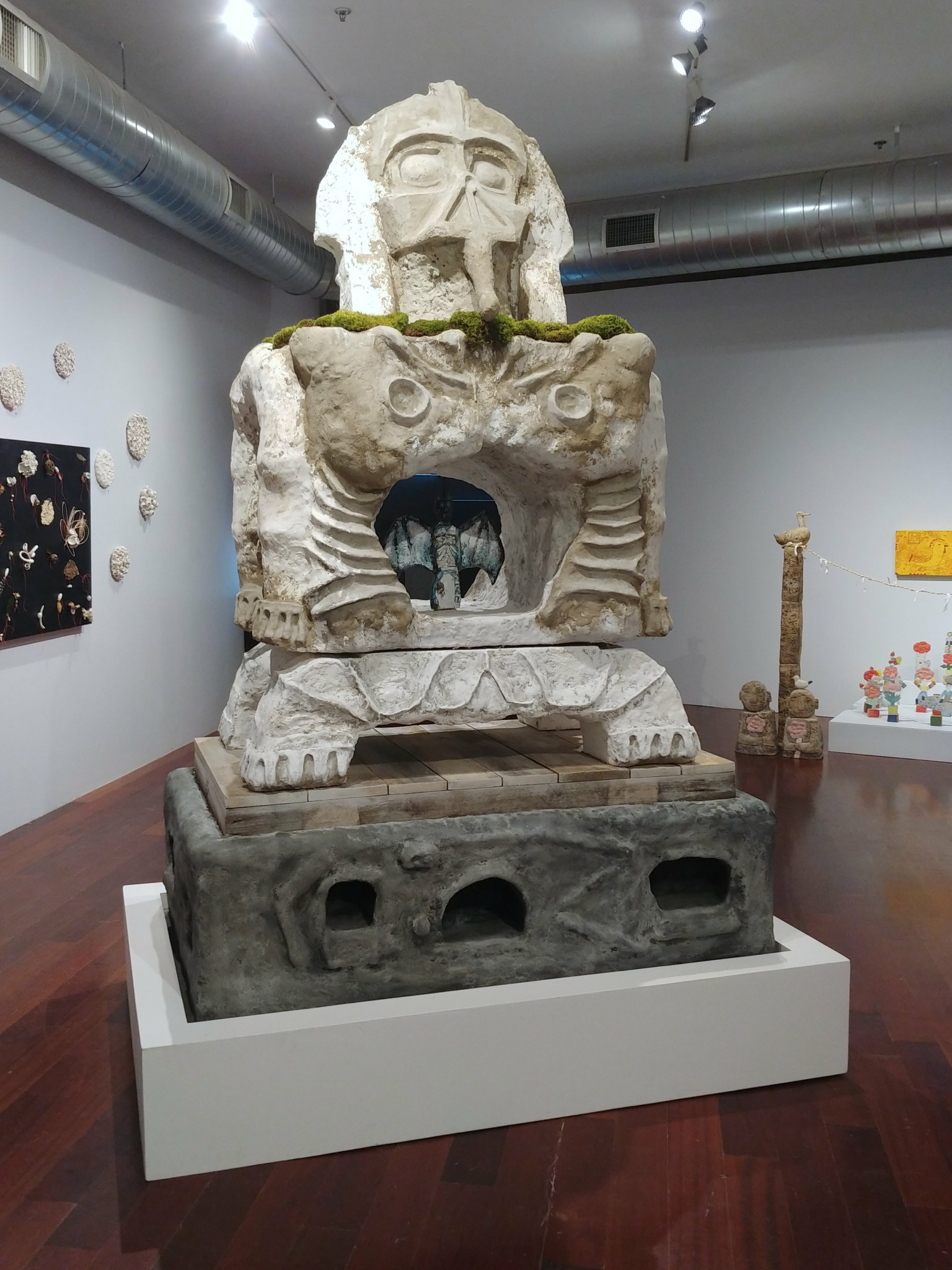
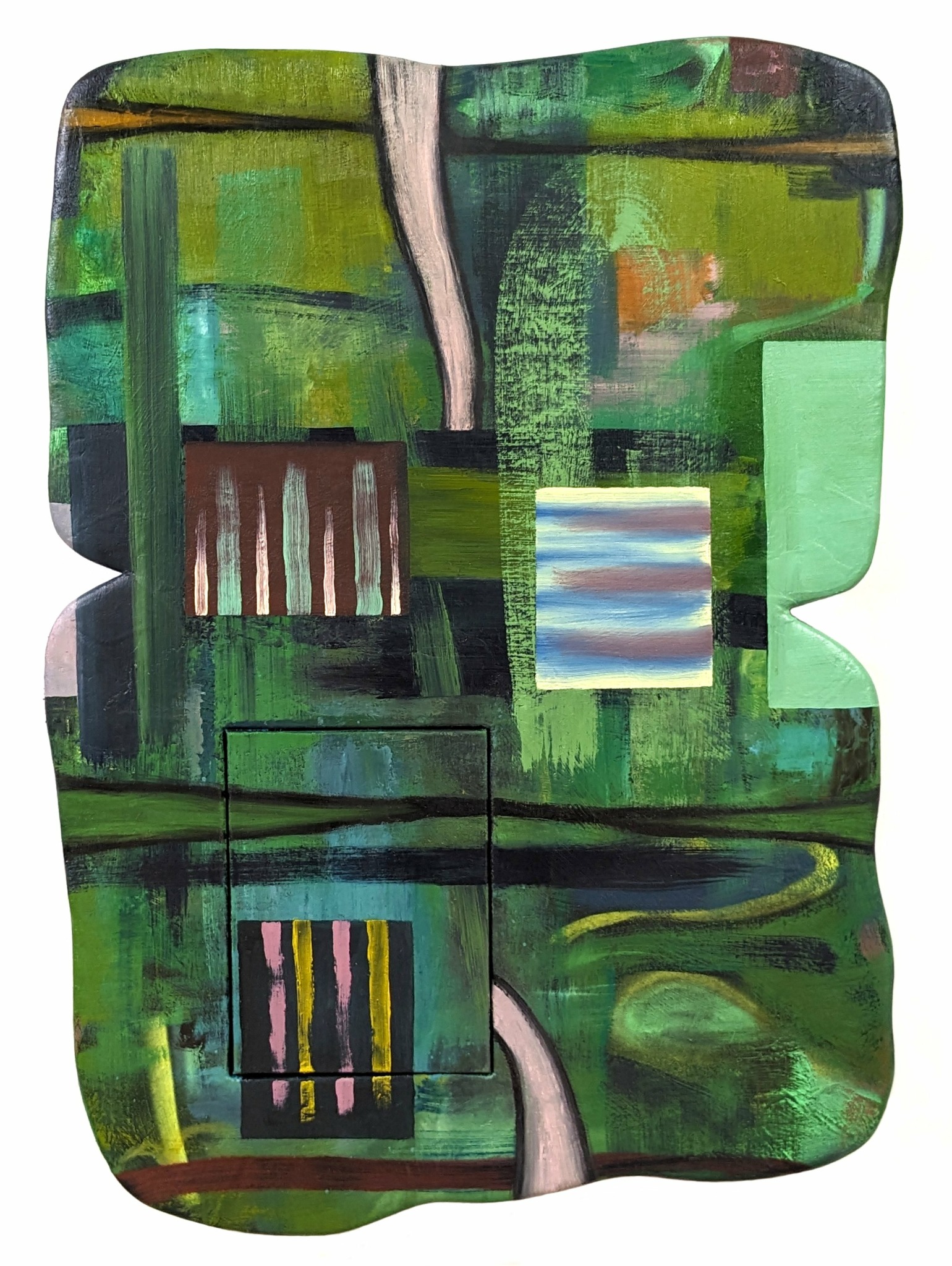
Looking back, are there any resources you wish you knew about earlier in your creative journey?
In the history of my family I’m the first of the creative kind. For me that meant that the contemporary art world was uncharted, I had zero exposure to it, and there was no one to guide me through it. Coming from a small town I didn’t even know what was out there, or what to look for. I was fortunate to experience early adolescence during the pre-internet age, however there was no Instagram app to open up and have instant access to endless visuals of contemporary art. It wasn’t until I was 18 that I attended an art museum. I went alone to the Museum of Fine Arts in Boston, and I explored the halls the whole day. I couldn’t get enough. My brain was crammed with so much information at once, and I was so absorbed in the experience that I forgot to eat or drink and was so dizzy leaving the museum at closing time.
As a dad I understand how beneficial it is for children to go to museums and to be exposed to the information that the world has to offer. Not everything interests them, but eventually they do see something that piques their curiosity. I’ve been bringing my boys to art museums since they were toddlers. I would pack a picnic lunch and plenty of snacks, bring the diaper bag and push them in their stroller for as long as they could last. I think that if I would’ve visited an art museum when I was a teenager I would’ve become a better artist sooner.
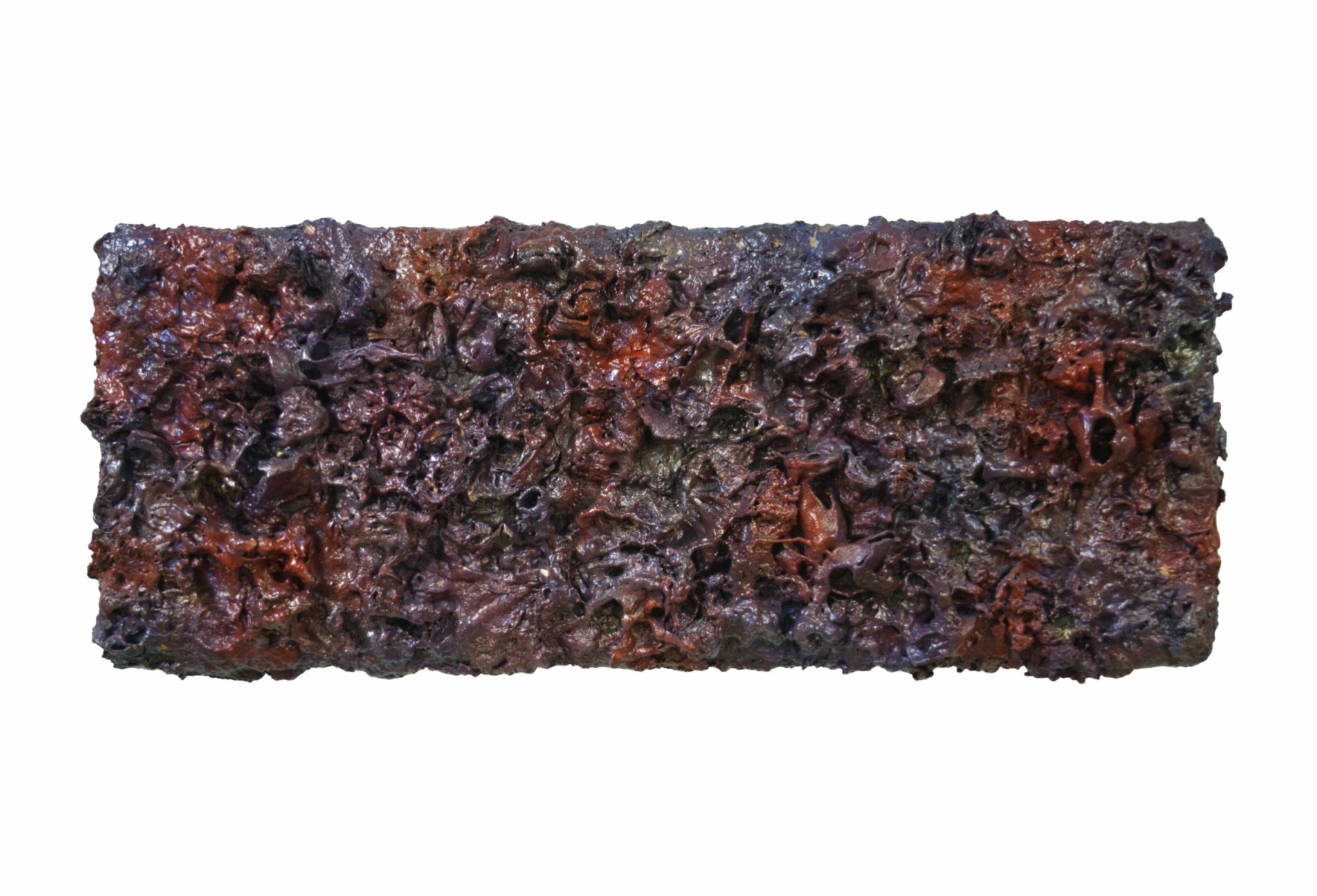
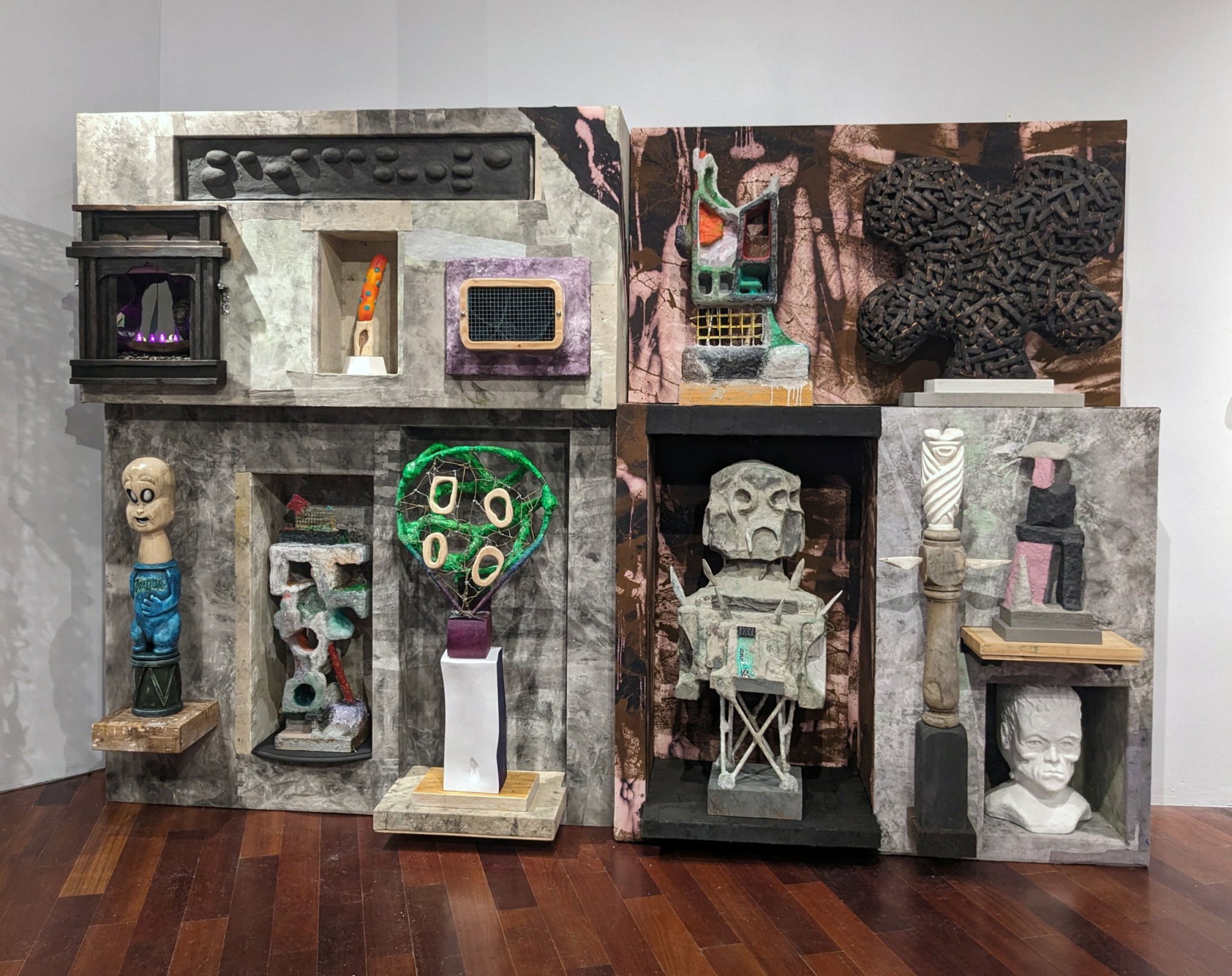
What do you find most rewarding about being a creative?
It’s all about fulfillment. Being a creative is not a choice, it’s a gift and it needs to be embraced. If that creative spirit is stifled it can feel like a curse. It’s a blessing to have the opportunity and desire to seek fulfillment and to give value to the gift I was born with. I’m rewarded by knowing that I’m working hard, my work continues to improve, and that I’m not wasting my potential.
Contact Info:
- Website: https://aaronbrodeurart.com
- Instagram: aaron.brodeur_studio
